God / Role Considerations
Theorycrafting and the art of optimizing builds has always been at the forefront of high-level play. Individual skill level and teamwork can make or break a team, but item choices have a huge effect as well.
The process of choosing the best items for a given situation incorporates recognition of several things, including but not limited to:
God Kit: What skills does the god have? Do they include high burst damage, or do they provide a lot of crowd control (CC)? Does the god have strong basic attack function, or do they rely on abilities for their damage?
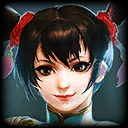 Jing Wei has ranged basic attacks and her kit provides buffs to her attack speed and critical chance...she should focus on items that support her basic attacks through strength, attack speed, critical chance and penetration.
Jing Wei has ranged basic attacks and her kit provides buffs to her attack speed and critical chance...she should focus on items that support her basic attacks through strength, attack speed, critical chance and penetration. 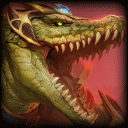 Sobek has 2 abilities that displace enemies, and another ability that reduces enemy healing, so his strength is crowd control, and cooldown reduction (CDR) items work well for him to use those abilities often.
Sobek has 2 abilities that displace enemies, and another ability that reduces enemy healing, so his strength is crowd control, and cooldown reduction (CDR) items work well for him to use those abilities often.
Damage Types & Scaling: Does the god have single-hit skills, or can their abilities hit multiple times in succession (either tick or DoT damage)? What is the scaling type of said abilities (+ X% of your strength and/or intelligence)? The higher the scaling is, the more that the stat will increase the damage potential.
- Single-hit abilities benefit more from non-stacking penetration items, such as
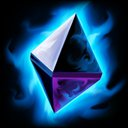 Obsidian Shard and
Obsidian Shard and 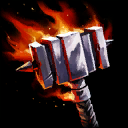 Titan's Bane. Basic attackers will often build stacking penetration items provided by items such as
Titan's Bane. Basic attackers will often build stacking penetration items provided by items such as 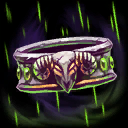 Demonic Grip (intelligence-based) and
Demonic Grip (intelligence-based) and 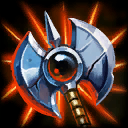 The Executioner (strength-based).
The Executioner (strength-based).
- Do the god's skills have high base damage and low scaling, or low base damage and high scaling? High scaling strongly benefits from higher power (e.g.
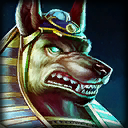 Anubis's
Anubis's  Plague of Locusts has 264% scaling at max rank (if all 12 hits land) and often indicates that they're meant to be built for damage. Inversely, low scaling (e.g.
Plague of Locusts has 264% scaling at max rank (if all 12 hits land) and often indicates that they're meant to be built for damage. Inversely, low scaling (e.g. 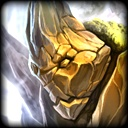 Geb's
Geb's  Shock Wave has 50% scaling) is a hint that they should be focusing less on damage and more on tanking or utility. Or, you can potentially get more damage out of the ability by using it more (increasing cooldown rate).
Shock Wave has 50% scaling) is a hint that they should be focusing less on damage and more on tanking or utility. Or, you can potentially get more damage out of the ability by using it more (increasing cooldown rate).
Game Mode: Are you playing Conquest and expect to find yourself alone or with only one other teammate for a good portion of the match? Are you playing Duel, where it's just you and an enemy? Or are you playing Arena, where it's a constant teamfight?
- In Conquest, certain starter items (which were designed specifically for early laning in Conquest) are almost always suggested, as they provide important stats to help you stay out longer or win exchanges. Stacking items such as
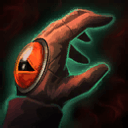 Devourer's Gauntlet and
Devourer's Gauntlet and 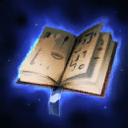 Book of Thoth are also more helpful and easy to stack during laning, compared to some teamfight modes.
Book of Thoth are also more helpful and easy to stack during laning, compared to some teamfight modes.
- In Duel, you only have to worry about one god, so counter-building is a key component of an effective build. Build some magical protections against a magical damage dealer even if you're an offensive god, and sustain items with lifesteal or health restore to stay alive longer.
- In teamfight modes, some items can have effects on multiple gods at once, and threat of damage from multiple enemies at any time can mean protections can have a more significant effect. In Conquest, Jungle starters like
 Bumba's Cudgel are important for clearing camps quickly, but in Arena, you won't need that effect and will be better served with something like
Bumba's Cudgel are important for clearing camps quickly, but in Arena, you won't need that effect and will be better served with something like 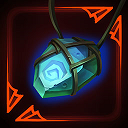 Bluestone Pendant.
Bluestone Pendant.
Team Compositions: Once you're familiar with the gods, you can easily recognize if an enemy team is likely to be tanky, squishy, or if there's an imbalance (e.g. 4 magical-damage gods and only 1 physical-damage god). It's a bit easier in Conquest since roles are assigned, but for teamfight modes, it will also have an effect on which god you choose (depending on teammates choices, role calling, etc.).
- If you're a tank, and you see the enemy team has 4 physical gods, you should obviously focus much more on physical protection than magical. If you see that multiple gods on your team are basic-attack oriented, choosing
 Shogun's Ofuda will help enhance their damage output.
Shogun's Ofuda will help enhance their damage output.
Item Costs: What is the
gold cost of the item? Especially in longer game modes with slower gold accumulation (such as Conquest), choosing a high cost item early in the game can mean that you're still working to complete it while the enemy already has completed their lower-cost item of choice, giving them a significant statistical advantage at least until you're able to finish your item.
- Building appropriate lower-cost items early in a match can lay the foundation of needed stats to enhance the effects of higher-cost items later in a match. Building enough cheaper items that provide a preferred function (e.g.
 Jotunn's Revenge provides decent strength and high CD rate for 2,450 gold) earlier allows you to gain quicker access to the full stats, instead of choosing to buy a high cost item like
Jotunn's Revenge provides decent strength and high CD rate for 2,450 gold) earlier allows you to gain quicker access to the full stats, instead of choosing to buy a high cost item like  Avatar's Parashu (3,700 gold) whose active also scales off of existing strength, meaning it's going to have higher effect when you've built more strength items.
Avatar's Parashu (3,700 gold) whose active also scales off of existing strength, meaning it's going to have higher effect when you've built more strength items.
- This doesn't mean that higher-cost items cannot ever be built early without good effect. In cases where you're able to get significantly ahead in farm (due to pressure, kills, securing the Gold Fury, etc.), it can give you enough gold difference to get an expensive item earlier. Items like
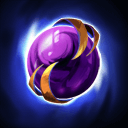 Doom Orb (2,850 gold) can give you very functional early effect (high intelligence, movement speed for safety and quicker rotations) that balances the cost.
Doom Orb (2,850 gold) can give you very functional early effect (high intelligence, movement speed for safety and quicker rotations) that balances the cost.
Personal Playstyle: As quoted by Krett:
“The core of every build in every game that has a build – even an MMO like World of Warcraft – is the methodology,” explains Krett. “What are you doing and how does your build help you do it?” In other words, how do you play, and how can you tailor a build to best suit your playstyle?
- Aggressive Playstyle: Do you find yourself overextending a lot? Are you able to easily get kills, but then have problems getting out alive? Of course, the optimal solution is to train yourself to recognize optimal situations where you can attack, with a high probability of survival, by watching enemy ability use (making sure their CC abilities or ults are down), gaining better awareness of surroundings and teammate proximity to help, etc. However, as an example, one build style you might consider is to build some protection instead of going full glass cannon, or get some additional movespeed to help you escape.
- Having to back constantly due to low health, mana, or both: Do you take too much damage, too often, in comparison to enemies? Do you constantly find that you quickly run out of mana? For health, choosing items with additional health or protections can help you stay out longer, but you might also consider items providing lifesteal or health regen early in a build. For mana, consider 2 options: 1) learn to choose the best times to use abilities, rather than just spamming them when they're available, or 2) building items providing additional mana or mana regen.
- Consider God Choice: If you have an aggressive playstyle, it's probably better for you to choose
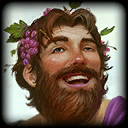 Bacchus or
Bacchus or  Sobek over
Sobek over 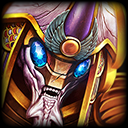 Khepri in a tank role. If you're much more comfortable hanging back and poking or protecting from distance, you might find more enjoyment playing
Khepri in a tank role. If you're much more comfortable hanging back and poking or protecting from distance, you might find more enjoyment playing  Hecate over
Hecate over 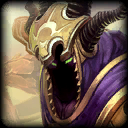 Hades, or
Hades, or  Geb instead of
Geb instead of 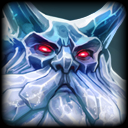 Ymir. Learn the strengths of each god, and consider honing your skills with those gods that fit your personal preference.
Ymir. Learn the strengths of each god, and consider honing your skills with those gods that fit your personal preference.
Build Progression (Tank, Bruiser, Glass Cannon)
The following is a brief and general breakdown of standard build progression with itemization examples based on build type (tank, bruiser, full damage).
Tanks
Summary: Tanks choose items that provide protections and health, with the intent of soaking up a lot of damage and being a major distraction to the enemy team. Historical SMITE 1
Guardians and
Warriors such as
 Khepri
Khepri and
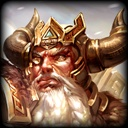 Odin
Odin are most often built tanky, though examples of gods not originally from those classes that can act as a tank include gods like
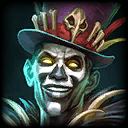 Baron Samedi
Baron Samedi,
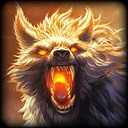 Fenrir
Fenrir, and
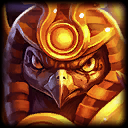 Ra
Ra.
General Role: Full tanks are usually built in the Support role in Conquest, though the Solo lane may also build similarly. They have great tank function in all other modes to help soak damage, disrupt enemies, and protect teammates.
Build progression: Starter items are built first, and protection / health / CDR items are typically built after that. Later in a build, expect to see more situational utility and counter items to fit the needs of the match. You (almost) never see full offensive items being built. Here is an example:
Tank Build Progression
- Starter Item
- Protection and/or CDR item
- Protection and/or CDR item
- Protection and/or CDR item
- Situational / counter item
- Situational / counter item
- Situational / counter item
The build case above is great for a classic tank / support that is looking to stay close to teammates and react to enemies by countering them with CC abilities. All items are providing protections, with CDR in 3 of the top 4 non-starter items. There's a lot of utility from actives in Talisman, Stampede and Gargoyle, a counter item in Ankh, and good mitigations from Spirit. Utility/Counter items become more important as the match goes on.
Common Starter Items:
General Defensive Items w/ no Actives:
Items w/ Offensive Function:
Common Counter / Utility Items:
Protection / Utility Options w/ Actives::
Bruisers
Summary: Bruiser builds and playstyles may combine offensive and defensive stats in their item choices, often to help counter specific enemies while retaining a good amount of damage potential. Gods with abilities providing high base damage can build mostly protections and still be a strong offensive threat. Matches in the duel mode often build both defense and offense to specifically counter the one enemy they're facing.
General Role: Conquest Solo-laners, as well as select Junglers may often build as Bruisers. In other modes, almost any god can go Bruiser, depending on the situation. Just understand that you're getting some damage and some protections without being particularly strong in either.
Examples of Gods Sometimes Built As Bruisers:
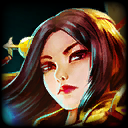 Amaterasu,
Amaterasu, 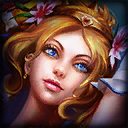 Aphrodite,
Aphrodite, 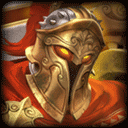 Ares,
Ares, 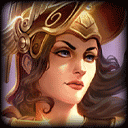 Athena,
Athena,  Bacchus,
Bacchus,  Baron Samedi,
Baron Samedi, 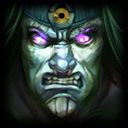 Cabrakan,
Cabrakan, 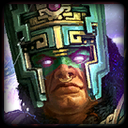 Chaac,
Chaac,  Fenrir,
Fenrir,  Hades,
Hades, 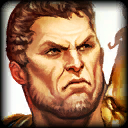 Hercules,
Hercules,  Hua Mulan,
Hua Mulan,  Mordred,
Mordred, 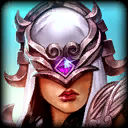 Nemesis,
Nemesis,  Odin,
Odin,  Sobek,
Sobek, 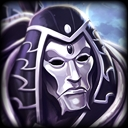 Thanatos,
Thanatos, 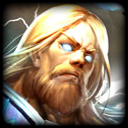 Thor,
Thor,  Ymir
Ymir
Build progression: Starter items are built first. What follows depends on the god, build preference, and mode. In the Conquest Solo-Lane, you'll usually get an item that counters your lane enemy 1st and/or 2nd. Here is an example:
Bruiser Build Progression
- Starter Item
- Damage or Protection item (highest threat)
- Damage or Protection item
- Situational / counter item
- Situational / counter item
- Situational / counter item
- Situational / counter item
The above build may look somewhat similar to the tank build example, with exceptions. The starter has an offensive focus,
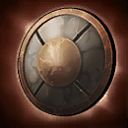 Gladiator's Shield
Gladiator's Shield has early bonus damage function, and
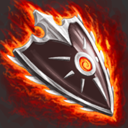 Shield of the Phoenix
Shield of the Phoenix provides some health sustain.
 Phoenix Feather
Phoenix Feather is a selfish item that helps keep you alive as you dive and disrupt the backline.
Common Bruiser Starter Items:
General Defensive Items w/ no Actives::
Items w/ Offensive Function:
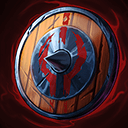 Berserker's Shield,
Berserker's Shield,  Eye Of The Storm,
Eye Of The Storm,  Gladiator's Shield,
Gladiator's Shield, 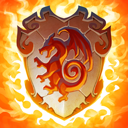 Glorious Pridwen,
Glorious Pridwen,  Helm Of Darkness,
Helm Of Darkness,  Helm Of Radiance,
Helm Of Radiance, 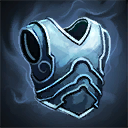 Mystical Mail,
Mystical Mail, 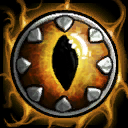 Shifter's Shield,
Shifter's Shield,  Shogun's Ofuda,
Shogun's Ofuda, 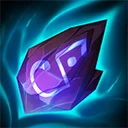 Stone of Binding,
Stone of Binding, 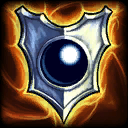 Void Shield,
Void Shield, 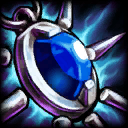 Void Stone
Void Stone
Common Counter / Utility Items:
Protection / Utility Options w/ Actives::
Full Damage (Glass Cannon)
Summary: Full damage (AKA glass cannon) builds focus on maximizing damage (at the cost of survivability) via stats like strength, intelligence, penetration, lifesteal, attack speed, and CDR. "The best defense is a good offense" is a perfect motto for them. They may occasionally build one item with some protection function, but generally want as much damage as they can get.
General Role: Gods that choose full damage are commonly used in the following Conquest roles: ADC (Carry), Jungler, and Mid-Laner. Any god in non-Conquest modes can choose to build full damage, but some are obviously better choices than others.
Build progression: Starter items are built first. Depending on the god, all following items look to increase their strength/intelligence, penetration, CDR, attack speed, critical chance...things that increase their damage output.
Carry Build Progression
- Starter Item
- Damage and / or Utility
- Damage and / or Utility
- Damage and / or Utility
- Damage and / or Utility
- Damage and / or Utility
- Damage and / or Utility
Mid-Lane Int-Scaling Build Progression
- Starter Item
- Damage and / or Utility
- Damage and / or Utility
- Damage and / or Utility
- Damage and / or Utility
- Damage and / or Utility
- Damage and / or Utility
Common Starter Items:
[*]
Basic Attack Focus: 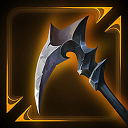 Death's Toll
Death's Toll,
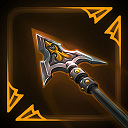 Gilded Arrow
Gilded Arrow,
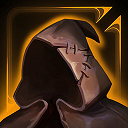 Leather Cowl
Common Damage Items
Leather Cowl
Common Damage Items:
- Strength-Based Ability Focus:
 Avatar's Parashu,
Avatar's Parashu,  Avenging Blade,
Avenging Blade,  Brawler's Ruin,
Brawler's Ruin, 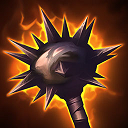 Dominance,
Dominance, 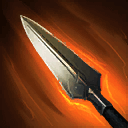 Heartseeker,
Heartseeker, 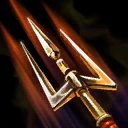 Hydra's Lament,
Hydra's Lament,  Jotunn's Revenge,
Jotunn's Revenge,  Oath-Sworn Spear,
Oath-Sworn Spear,  Pendulum Blade,
Pendulum Blade, 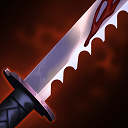 Serrated Edge,
Serrated Edge,  Tekko-Kagi,
Tekko-Kagi, 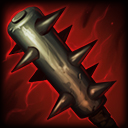 The Crusher,
The Crusher,  The Reaper,
The Reaper,  Titan's Bane,
Titan's Bane, 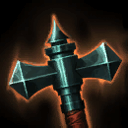 Transcendence
Transcendence
- Intelligence-Based Ability Focus:
 Book of Thoth,
Book of Thoth, 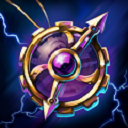 Chronos' Pendant,
Chronos' Pendant, 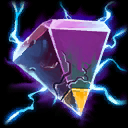 Divine Ruin,
Divine Ruin,  Doom Orb,
Doom Orb,  Dreamer's Idol,
Dreamer's Idol, 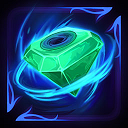 Gem of Focus,
Gem of Focus,  Necronomicon,
Necronomicon,  Obsidian Shard,
Obsidian Shard, 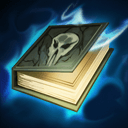 Polynomicon,
Polynomicon, 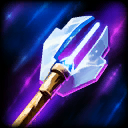 Rod of Tahuti,
Rod of Tahuti, 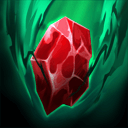 Soul Gem,
Soul Gem, 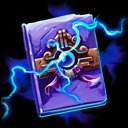 Soul Reaver,
Soul Reaver, 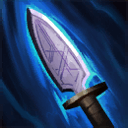 Spear of Desolation,
Spear of Desolation, 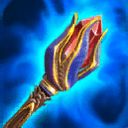 Staff of Myrddin,
Staff of Myrddin,  The Cosmic Horror,
The Cosmic Horror,  The World Stone,
The World Stone,  Totem Of Death,
Totem Of Death, 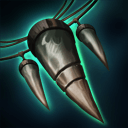 Typhon's Fang
Typhon's Fang
- Basic Attack Focus / Critical Chance:
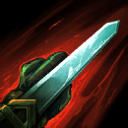 Bloodforge,
Bloodforge,  Bracer Of The Abyss,
Bracer Of The Abyss,  Bragi's Harp,
Bragi's Harp,  Dagger Of Frenzy,
Dagger Of Frenzy,  Death Metal,
Death Metal, 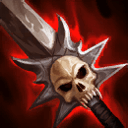 Deathbringer,
Deathbringer, 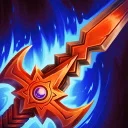 Demon Blade,
Demon Blade,  Demonic Grip,
Demonic Grip,  Devourer's Gauntlet,
Devourer's Gauntlet, 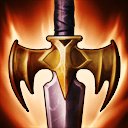 Hastened Fatalis,
Hastened Fatalis,  Lernaean Bow,
Lernaean Bow,  Musashi's Dual Swords,
Musashi's Dual Swords, 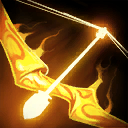 Odysseus' Bow,
Odysseus' Bow, 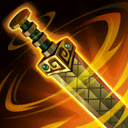 Qin's Blade,
Qin's Blade,  Sun Beam Bow,
Sun Beam Bow,  The Executioner
The Executioner
Utility / Survival Items:


 Revision History
Revision History
 ADC (Carry) Starters
ADC (Carry) Starters Jungler Starter Items
Jungler Starter Items Mid-Lane / Intellect Starters
Mid-Lane / Intellect Starters Solo / Strength Starters
Solo / Strength Starters Support Starters
Support Starters
Leave a Comment This author would like to receive feedback
and suggestions about their guide.
You need to log in before commenting.
Collapse All Comments